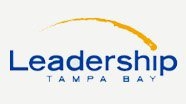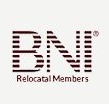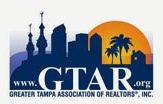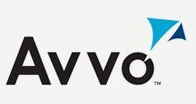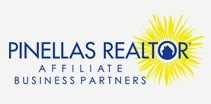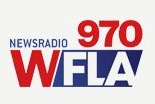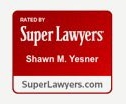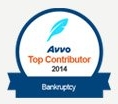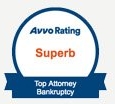Should I Consolidate My Debt or File Bankruptcy?
There are many ways to eliminate debt: (1) negotiate a plan with the creditor directly, (2) “snowball” or “avalanche” the debt, (3) take out a consolidation loan, (4) transfer debt from a higher interest rate to a lower interest rate (a personal loan, or 0% credit card, for example), or (5) bankruptcy. Which one is better? Typical attorney answer – it depends on your situation. However, I’ll explain all of these options as well as pros / cons of each.
I’ve created a lot of content, on this blog, with the Crushing Debt Podcast, and I even wrote a book called Crushing Debt, about negotiating a payment plan with your creditor. There are two different types of settlements you can negotiate: (a) a lump sum settlement, or (2) a payment plan settlement. The lump sum settlement is good because it is a one-time payment, typically for less than the full balance owed, that will eliminate the debt in full. The downside of a settlement like this is that you have to be able to make the one-time payment. For example, if you owe $1,500 and the creditor will take $500 to settle, that might be affordable. However if you owe $150,000 and the creditor will take $50,000 to settle, that might be a bit harder to accumulate and pay in one lump sum without liquidating some other assets. In a situation like that, you may want to negotiate a payment plan settlement – pay the $50,000 over time. The benefit of a settlement like this is that the payments make the settlement more palatable. The bad part about a settlement like this is that if you fall behind in the settlement payments, the entire settlement is lost. Plus, creditors will likely want more since they’re getting their payments over a longer period of time. In my example above, where a creditor might take $50,000 as a lump sum, they may want $75,000 if you’re paying over time. Finally, a payment plan settlement means you have that creditor in your life for that much longer. The biggest negative of this method, aside from needing the budget to pay the debt, is that this method will affect your credit (although not as much as some of the other options below).
You could “snowball” or “avalanche” the debt. Under this method of debt reduction, you pay the minimum payments on all of your debts except the smallest debt. You pay as much as your budget will allow (and more than the minimum payment) on the smallest debt. Once that debt is paid off, you focus on the next smallest debt and pay that one, and repeat until all of your debt is paid. Another version of this method is to pay as much as you can to the card with the highest interest rate (regardless of the balance due). Once the highest rate card is paid off, you work on the next highest interest rate, and repeat. The benefit of this method is that you are in control of paying the debt. Many people don’t like the idea of filing bankruptcy, or hurting their credit with a debt settlement. In connection with a debt snowball or avalanche, you can also call your credit card companies to see if they will reduce the interest rate. By reducing the interest rate, you will reduce your minimum payments, and the snowball or avalanche payment now pays down more principal balance because of the smaller interest rate. The negative about this method is that it takes some time to pay off the debt – although the concept of the snowball or avalanche is that once it gets going, the process continues to accelerate as you eliminate debt. Be careful, however, to stop using the cards once you pay them off. If you continue to use a card after it has been paid off, you’re now on a hamster wheel rather than an avalanche.
If you have a strict budget, and you are disciplined to NOT use your credit cards after you’ve paid them off, then you can consider a consolidation loan. The most obvious benefit of a consolidation loan is that you are taking a bunch of loans, and therefore all of those minimum payments, and consolidating them into one bigger loan hopefully with a much smaller minimum payment that all of the other smaller minimum payments combined – because of a consistent or lower interest rate on the consolidation loan. Be careful, however, like with the snowball or avalanche method above, that you stop using the cards of the debts that have been consolidated, otherwise you’re simply doubling your debt!
Similarly, you could transfer balances from older cards with higher interest rates, to newer or lower cards with introductory 0% or lower interest rates. Again, however, make sure to then cut up, destroy, hide or stop using the older cards to avoid doubling your debt. In addition, be careful about introductory rates because if you don’t pay off those balance transfers over a specific period of time, that introductory 0% interest rate could become a double-digit interest rate, sometimes all the way back to the beginning of the loan.
Finally, as an option of last resort, you can consider a bankruptcy. Some of the pros and cons about a bankruptcy: Bankruptcy will eliminate your debt, and possibly allow you to keep all of your stuff, depending on the value of your stuff and which chapter you file, 7 (liquidation) or 13 (reorganization). However you need to be careful and meet with someone knowledgeable about bankruptcy to determine if you qualify and then which chapter is best for you. In some cases, the bankruptcy trustee will be entitled to collect money or non-exempt assets from you (in a Chapter 7 liquidation) to pay off your creditors for a fraction of what they are owed. Or, you can agree to a payment plan (Chapter 13) to repay some percentage of the debt owed to your creditors over no more than sixty (60) months. The obvious downside of a bankruptcy is the negative impact on your credit, although you will still qualify for credit a few years after a bankruptcy discharge. Some people perceive the “stigma” of filing bankruptcy as a negative, but I’ve never had a client experience that issue.
If you are overwhelmed by credit cards, student loans, IRS or any other type of debt, please contact us to schedule a free initial consultation to discuss your options at 813-774-5737 or email me directly at shawn@yesnerlaw.com. You can also order Crushing Debt: 9 Strategies to Eliminate Financial Bullies on Amazon.com. Please also subscribe to the Crushing Debt Podcast, on Apple Podcasts, Spotify, and other podcast players, including Amazon Echo (“Alexa”) for more free information about these topics.
Shawn M. Yesner, Esq., is the host of the Crushing Debt Podcast and founder of Yesner Law, P.L., a Tampa Bay based consumer law firm that helps clients eliminate the financial bullies in their lives. We assist clients with asset protection, the sale and purchase of real property, Chapter 7 liquidation, Chapter 13 reorganization, bankruptcy, foreclosure defense, debt settlement, landlord/tenant issues, short sales, and loan modifications in Tampa, Westchase, Citrus Park, Odessa, Oldsmar, Palm Harbor, Clearwater, Countryside, Pinellas Park, Largo, St. Petersburg, and throughout the greater Tampa Bay Area.

